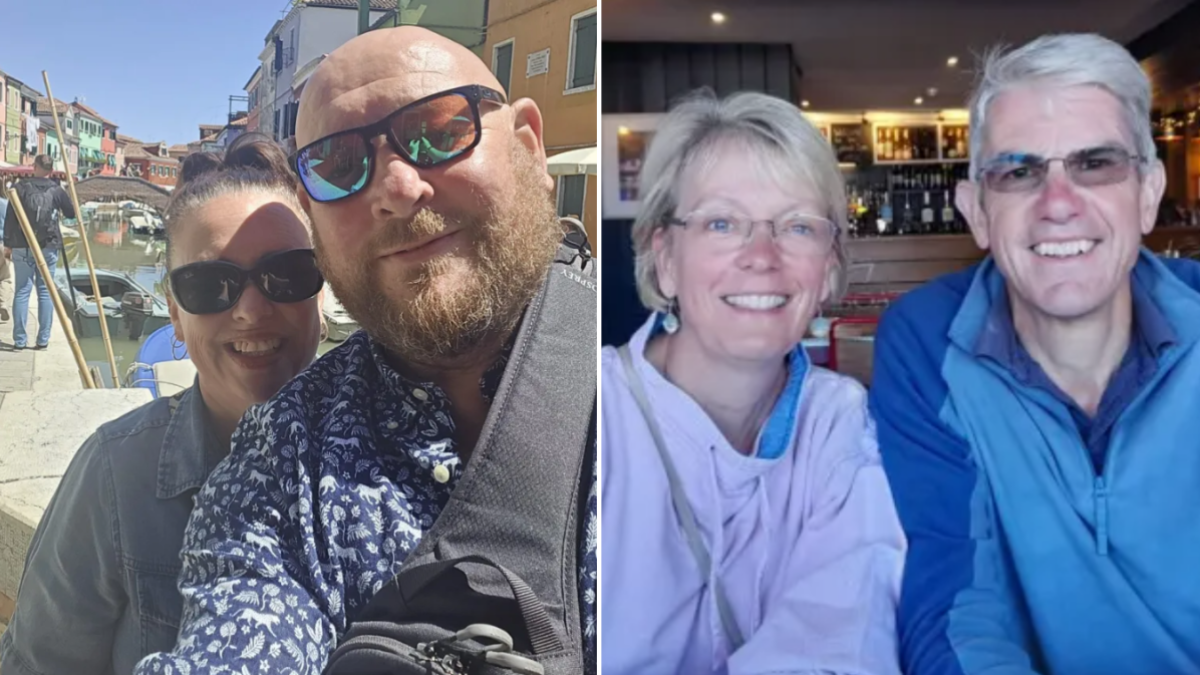A £1.2m pot is now essential for a comfortable retirement, according to statistics – and few are close. We speak to six people with healthy pensions about how they did it
New analysis reveals workers are facing a pension savings shortfall of up to £740,000, as the cost of a “comfortable” retirement continues to soar.
According to the Pensions and Lifetime Savings Association (PLSA), someone earning £35,000 today would need a pot of nearly £1.2m to maintain a decent post-work lifestyle in 40 years’ time.
But under current auto-enrolment rules, which see employees and employers contribute just 8 per cent of their salary combined, they are more likely to end up with less than half that amount.
A comfortable retirement, the PLSA says, means being able to spend £150 a week on food and socialising, take an annual four-star holiday, and cover basic needs without worry – a standard now requiring a post-tax income of £43,900 per year.
Experts warn that the current framework is no longer fit for purpose, with millions “sleepwalking” towards a retirement that falls short of expectations.
The i Paper spoke to six individuals about how they plan to fund a comfortable retirement and how they will spend their money when the time comes.
‘I want to retire with £1.25m pension pot’
Mark Gibb, 55, lives in Brighton. He runs his own structural engineering company, Stephen Wilson Partnership.

I contribute £60,000 a year into a private pension; the maximum you can contribute while getting tax relief. I’m aiming to retire at 63 with £1.25m and I’m not too far off.
I started saving into a pension in my early forties. I regret the 10 years I didn’t save, but I was the usual irresponsible young man.
My best friend is a financial adviser and spent two years nagging me to start: he wanted us to go to Australia to watch the Ashes when we retire, which hit home, and so I started saving.
Since then I have put about 10 per cent of my salary in my pension. My wife, Vicky, who is 49, is a nurse and has a final-salary pension. We plan to travel when we’re retired: to Canada, Mexico, Thailand, South Africa.
My adviser, who works for St James’s Place, suggested £1m as a comfortable total goal; I added 15 per cent on top which should give me an income of £45,000 to £50,000 a year.
‘I pay £48,000 a year into my pension’
Anjali Mukherjee is 47 and works in financial services. She lives in Greater London with her husband, who works in IT, and her school-age daughter.
I pay the maximum into my pension, which is £48,000. I started saving about 15 per cent of my salary in 2015, and when I became self-employed in 2019 I read about the tax benefits of pension saving. Then I started saving more aggressively, both as a way to reduce the tax bill for my company, and to make sure I will have enough money in retirement.
I have a self-invested personal pension (SIPP) with the investment platform AJ Bell. This means I have a large range of funds to invest my money into, compared with workplace pension schemes where the choice can be limited. I am very engaged with monitoring my investments and moving them if the money doesn’t do well, and believe this has given me a better rate of return.
I have spread my money between 25 and 30 funds as I believe in not putting all my eggs in one basket. I decide the funds by looking at the rating that Morningstar [a company that provides research into investment companies] gives them. I compare the fund’s risk profile to mine, which is medium to high, and rate performance over the past five years.
I am planning on retiring at the usual time. When I do, I want to go on lots of holidays and spending quality time with my friends and family.
‘I’m a baby boomer and extremely fortunate’
Robert Lane is 63 and retired. He lives on the Herefordshire border. Before retirement, he worked as an engineer and business manager for Siemens.

I have two final salary defined benefit (DB) pensions [where you get a guaranteed income for life, usually based on your salary and how long you worked], and a defined contribution (DC) pension [the most common type of pension, where you save into a pot of money and how much you finally get depends on the performance of the investments]. My wife gets a small DB pension.
The DC money was worth several hundred thousand pounds by the time I retired. The DB pensions paid under £20,000 a year combined when I first retired but are now paying considerably more because they are linked to inflation.
I’m of the baby-boomer generation, and I am extremely fortunate. I had the benefit of free higher education, free dentist visits, and I worked in a time when generous final salary pensions were common.
I planned to retire at 55, in 2017. However, I managed to persuade my boss to make me redundant, so I was able to retire a year earlier and live off my redundancy money.
I was (and still am) meticulous in my planning. I run our family like a small business: I have cash flow forecasts, and the equivalent of a balance sheet and a profit and loss account.
I feel for the younger generation, as DC pensions mean the risk is on you. Unlike DB pensions, where the risk is on the employer – you receive the same money no matter what happens in the stock market.
I invest in funds [a collective investment where money from multiple investors is pooled and managed by a fund manager], rather than single stocks, and am careful to make sure I’m diversified to spread the risk. I split my money equally between the UK, Europe/Asia, and North America, and have a few funds in the biotech industry as I believe it’s the future.
I do a bit of volunteering, and have taken up golf, which gets me in the fresh air. We have a campervan and use it to see more of the UK. We plan to travel more. My wife would like to go to New York. My bucket list is to interrail – but not as a student sleeping on park benches; sleeping in posh hotels instead.
‘I save around 70 per cent of my income’
Diego Scur is a 42-year-old business manager who lives in north London.

I have £150,000 in two pensions – one is my workplace pension and the other a SIPP. I also have £120,000 invested in my stocks and shares ISA.
My workplace pension is in the lifestyle fund [the one you are automatically placed in, which lowers risk as you get closer to retirement], but in the ISA and SIPP I take more risk. I have shares in UK pension and energy companies as well as some energy companies in Brazil and Turkey as I think they offer good value. I put the maximum amount I can into my ISA every year [currently £20,000], and if I have any money left I move it to the SIPP.
I’m focused on dividend income [the money companies pay investors during the year]. This year was a big one for me because I’m generating enough to pay my bills, around £1,600 a month, not that I’m doing this yet.
I follow the FIRE movement [short for Financial Independence, Retire Early], which focuses on retiring early made possible by intensive saving and investing, so you can achieve an income from your savings and don’t have to work, and save around 70 per cent of my income.
My plan is to work six months a year, travelling the rest of the time. I can do this once I have a margin of safety. Let’s say my bills are £2,000 a month, I would like to have at least £3,000 in passive income [money made, but not by working, i.e. from invested income]. My partner is saving in the same way. She was a bit afraid of the stock market but now she’s investing, and she’s doing well.
‘Once I get to 67, my annual income will be £30,000’
Faisal Bacchus is 61 and live in Teddington, in south-west London. He is retired.

I started my career in computer leasing then worked as a primary-school teacher for six years before I burned out. I loved the variety of it but if you do teaching well, it consumes you.
I then worked in the Civil Service as a middle manager for 10 years and took retirement one year earlier than usual at the age of 59.
My public-sector pensions, from teaching and the Civil Service, amount to £20,000 a year before tax. This gives me about £1,500 a month.
I have benefited from these final-salary schemes which are very generous – I think the employer contributions matched mine.
I paid my mortgage off around 10 years ago. Once I get to 67, my state pension will kick in, which will give me another £10,000 a year. This will make my annual income £30,000 which will be more comfortable.
I also have £40,000 in consolidated private pensions with PensionBee, in the Climate Plan Fund. I currently put any surplus money I have from my income into a cash ISA, which has about £12,000 and is my holiday and rainy-day fund. I’m a religious golfer, and I can afford a membership to a club.
I have found retirement quite difficult. I can struggle with my mental health in winter because I need something to be active with and I don’t tend to play golf as much. I volunteer at a school, supporting children who find it difficult to engage with learnin, and I plan to seek other voluntary roles to fill in the gaps.
‘I started investing when I was 29’
Eugenio Landolfi is a 54-year-old architect living in Tottenham, north London.

I started investing in 1999, when I was 29, towards the end of the dotcom bubble. I have a SIPP with the investment platform A J Bell worth £115,000, a workplace pension worth around £10,000, and around £420,000 in other investments, which gives me an income of about £75,000 a year.
Until a couple of years ago, I was thinking of retiring at 55. But now, I think it might be better to postpone it.
My attitude to risk is medium to high. I invest in start-up companies through a website that helps people do this. It is considered high risk as many new companies go bankrupt, but I invest in start-ups where the CEOs are women to lower that risk. I believe women don’t take as much reckless risk as men.
I have also invested in large blue-chip firms such as British American Tobacco and Aviva, as well as funds. With the kind help of Donald Trump I recently made the most of a recent buying opportunity, increasing my exposure to global investments which went down in price [after markets dipped in response to Trump announcing new tariffs, which rattled investors].
Overall, I feel quite relaxed about how much I have in my pension and my main concern is my health.





